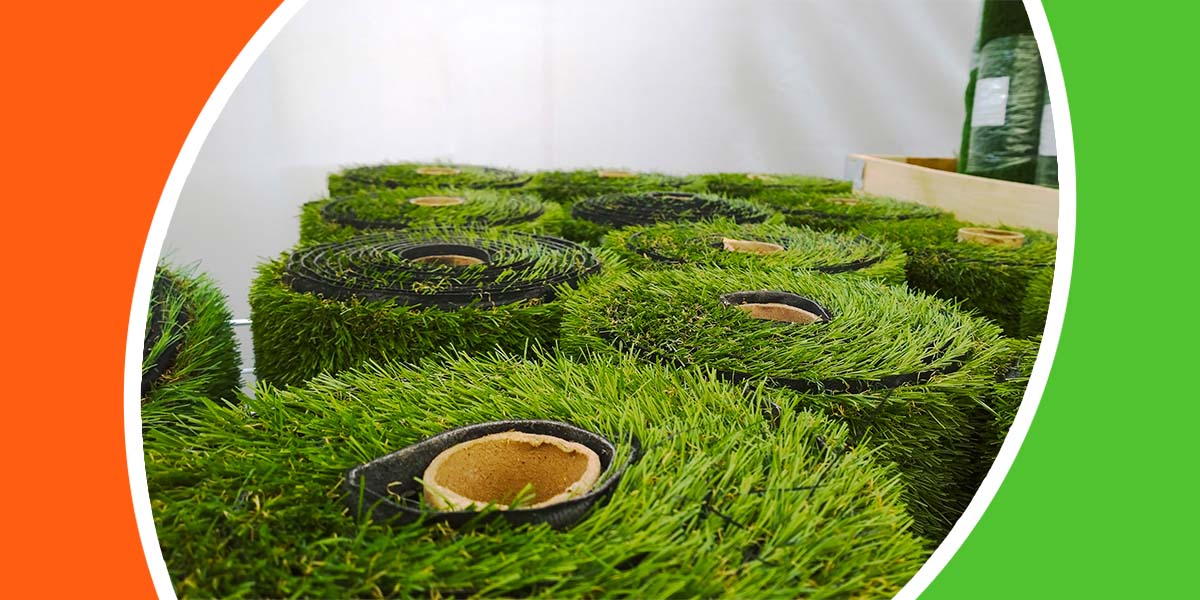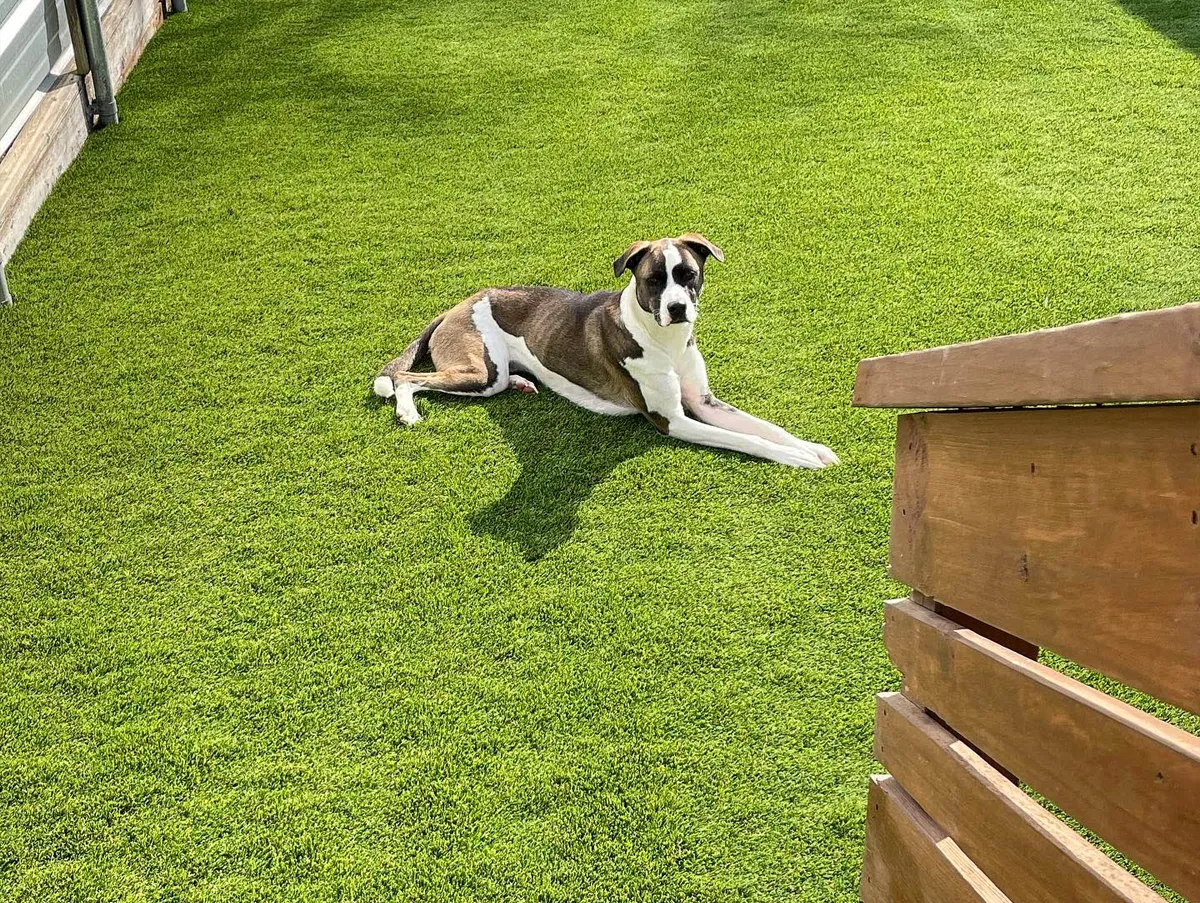Expert Arizona Turf Providers Delivering a Lifelike Lawn Option
Expert Arizona Turf Providers Delivering a Lifelike Lawn Option
Blog Article
Look Into the Environmental Conveniences of Opting for Synthetic Grass Solutions
The fostering of synthetic grass options offers a compelling opportunity to attend to pressing ecological challenges. By considerably minimizing water usage and lessening the application of harmful chemicals, these options not just promote lasting landscape design yet additionally shield regional ecological communities. The lower carbon footprint associated with decreased upkeep activities contributes to a much more sustainable method to land administration. The effects of these advantages extend beyond mere preservation initiatives, raising inquiries regarding their long-lasting impact on environment conservation and total ecological equilibrium. Discovering these dimensions discloses an intricate interaction worth taking into consideration.
Water Preservation Benefits
One of one of the most considerable advantages of synthetic grass is its capability to conserve water. Traditional grass lawns call for considerable irrigation, specifically in areas susceptible to drought or water constraints. In comparison, synthetic grass does not need watering, significantly lowering the total demand for water resources. This function is especially advantageous in dry regions where water scarcity is a pressing worry.
By removing the demand for regular watering, synthetic turf adds to lasting landscape techniques and helps mitigate the environmental effect of extreme water usage. The preservation of water expands to the decrease of overflow, which can lead to dirt disintegration and waterway pollution.
Furthermore, the installation of synthetic grass enables districts and homeowners to allocate water sources more efficiently, concentrating on crucial usages such as drinking water and agriculture. The change in the direction of artificial turf not only promotes liable water use but also aligns with more comprehensive environmental goals aimed at maintaining natural deposits.
As areas significantly focus on sustainability, the water preservation benefits of fabricated turf offer an engaging case for its adoption in residential and business landscape design projects.
Lowered Chemical Usage
The transition to artificial grass dramatically decreases the reliance on chemical therapies frequently utilized in all-natural lawn maintenance. Standard turf administration typically involves the application of chemicals, plant foods, and herbicides to advertise growth and control pests. These chemicals can present dangers to human wellness, neighborhood wild animals, and the atmosphere, adding to soil and water contamination.
In contrast, synthetic grass eliminates the need for these dangerous substances. As soon as mounted, it calls for minimal maintenance, mainly including normal cleaning and irregular infill replenishment. This decrease in chemical use not just profits the prompt setting however additionally adds to broader ecological security. By minimizing the launch of synthetic substances right into the environment, artificial grass promotes healthier soil and water supply.
Additionally, the absence of chemical overflow connected with synthetic lawn installations assists protect local rivers from air pollution, sustaining water life and maintaining biodiversity. Arizona artificial turf. As communities progressively prioritize lasting methods, choosing for synthetic grass offers a practical solution that straightens with environmental conservation objectives. Via this change, residential or commercial property owners can enjoy rich eco-friendly spaces without endangering environmental wellness, leading the means for an extra sustainable future
Lower Carbon Impact

Additionally, the installment of synthetic grass can cause considerable water preservation. All-natural lawns call for significant quantities of water for watering, which not just includes in the carbon impact connected with water removal and therapy yet additionally stress local water sources. On the other hand, synthetic grass needs marginal upkeep, calling for no watering, thereby dramatically decreasing water use and its connected energy costs.
In addition, the long life of synthetic grass adds to its reduced carbon effect. With a life-span of as much as 15 years or even more, the need for constant substitutes is diminished, causing less waste and reduced power intake in manufacturing and taking care of standard grass choices. Overall, synthetic grass provides a lasting alternative for ecologically aware landscaping.
Habitat Preservation
Habitat conservation is an important consideration in the argument over landscape design choices, especially when comparing fabricated lawn to natural grass. All-natural yard yards typically call for considerable maintenance, consisting of making use of pesticides, herbicides, and fertilizers, which can detrimentally influence local environments. These chemicals can leach into the soil and rivers, harming native flora and fauna and interrupting neighborhood habitats.
Artificial grass removes the demand for dangerous chemicals, thereby safeguarding nearby wildlife and maintaining the honesty of bordering environments. The setup of fabricated turf can lead to the conversion of former yard locations right into more biodiverse landscapes, such as pollinator yards or native plant locations, which can sustain regional wild animals.
Eventually, the get more change to synthetic grass not just saves water and decreases maintenance efforts but additionally cultivates a more harmonious relationship between human tasks and the natural environment, advertising environment conservation in the process.
Long-Term Sustainability
Long-term sustainability is a crucial element in examining the advantages of man-made lawn over typical yard lawns. One of the most considerable advantages of synthetic grass is its toughness; it can last approximately 15-20 years with marginal maintenance, whereas all-natural lawn requires constant reseeding and substitute. This durability lowers the demand for constant resources, such as water, plant foods, and chemicals, which are important for preserving a healthy and balanced grass yard.
Furthermore, synthetic grass adds to a decrease in carbon exhausts linked with grass care devices. Traditional grass typically need gas-powered lawn mowers, leaners, and blowers, all of which add to air pollution. Artificial turf companies phoenix. On the other hand, synthetic grass removes the need for such devices, advertising a cleaner environment
In addition, the manufacturing of synthetic grass increasingly makes use of recycled materials, improving its sustainability account. As makers adopt eco-friendly techniques, the ecological footprint of synthetic grass remains to lessen.

Final Thought
The adoption of man-made grass solutions presents considerable environmental advantages, consisting of considerable water conservation, reduced dependence on unsafe chemicals, and a lower carbon impact. Fabricated turf aids in protecting all-natural environments by decreasing land disruption and promoting long-term sustainability through the usage of resilient products. Collectively, these factors underscore the possibility of synthetic grass to contribute positively to environmental wellness and supply a feasible alternative to conventional landscaping methods in a significantly resource-conscious globe.
In comparison, synthetic lawn does not need watering, significantly decreasing the general need for water sources. By minimizing the release of synthetic substances right into the community, artificial lawn promotes healthier soil and water systems.
Additionally, the installment of synthetic turf can result in substantial water conservation. In comparison, man-made turf requires minimal upkeep, needing no watering, consequently considerably decreasing water use and its connected look at this website energy prices.

Report this page